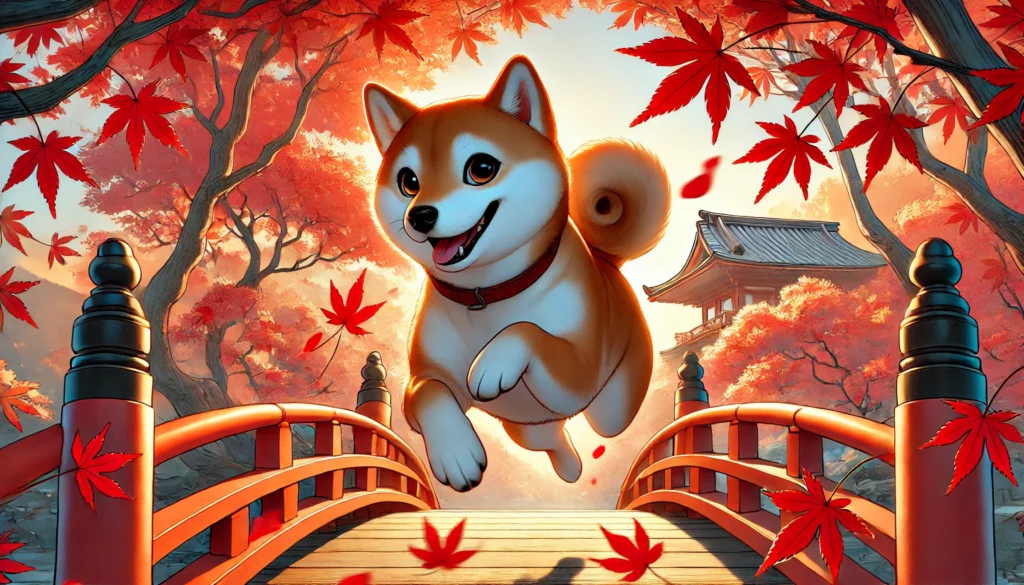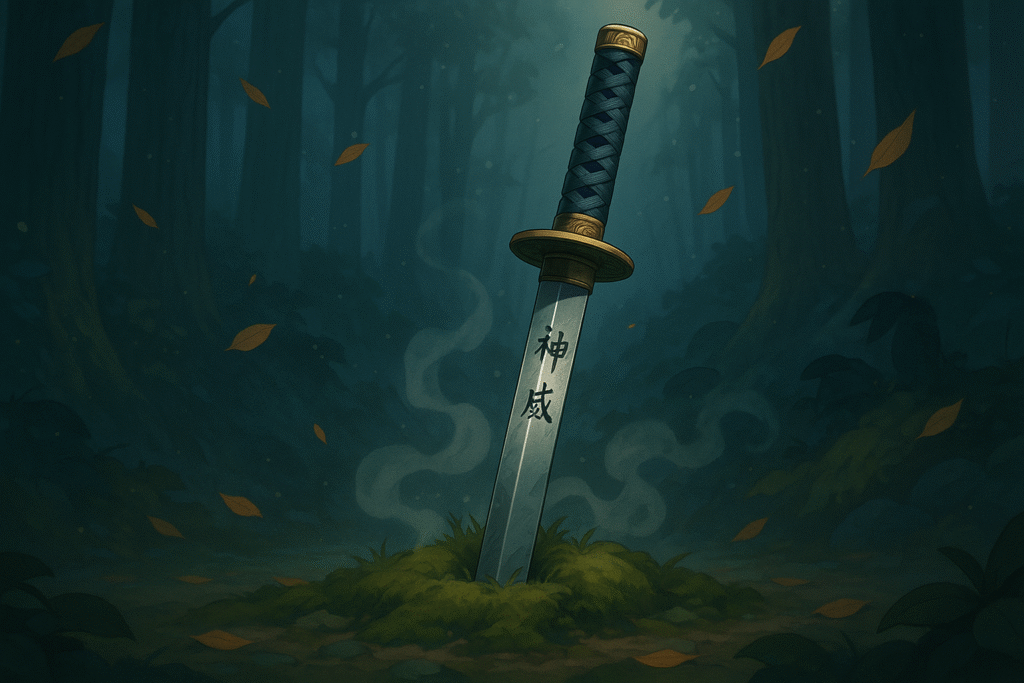Have you ever been captivated by the dignified Akita Inu from “Hachi: A Dog’s Tale” or smiled at the adorable Shiba Inu memes online? Japan’s native dog breeds combine fascinating history, unique temperaments, and striking appearances that set them apart from western counterparts. This comprehensive Japanese dog list will introduce you to all native Japanese breeds, their cultural significance, and what makes them special.
Why Japanese Dogs Are Unique
Japanese dogs (Nihon Ken) have been shaped by Japan’s varied geography and cultural practices for thousands of years. From the snowy mountains of Hokkaido to the subtropical islands of Okinawa, these breeds developed distinct traits that helped them excel at hunting, guarding, and companionship.
What makes the Japanese dog list particularly fascinating is how these breeds maintain primitive traits from their ancient ancestors while adapting to modern Japanese society. Many breeds on our Japanese dog list are recognized as “Natural Monuments” by the Japanese government, highlighting their cultural importance.
Want to explore Japan’s culture?
Discover Japan’s rich culture, traditions, and hidden gems with our expertly crafted guides. Get insider tips on travel, food, and history. All for free!
The Official Japanese Dog List: The Six Nihon Ken
According to the Japanese Dog Preservation Society (Nihon Ken Hozonkai or NIPPO), six native breeds are considered Japan’s national dogs. Let’s explore each one on this exclusive Japanese dog list.
1. Akita Inu (秋田犬)
Japanese name: 秋田犬 (Akita Inu)
Size: Large (26-28 inches tall, 70-130 pounds)
Lifespan: 10-13 years
The Akita stands as the largest and most recognized breed on the Japanese dog list. Originally bred as hunting dogs for tracking bear, wild boar, and deer in the mountainous Akita Prefecture, these dogs later became symbols of good health, happiness, and long life.
The Akita’s fame skyrocketed internationally after the story of Hachikō, who waited faithfully for his deceased owner at Shibuya Station for nine years. In Japanese, the loyal Akita is often called 忠犬 (chūken) meaning “loyal dog.”
Personality traits:
- Protective and loyal to family
- Reserved with strangers
- Dignified and quiet
- Independent nature
Japanese vocabulary related to Akitas:
- 秋田犬 (Akita inu) – Akita dog
- 大型犬 (ōgata inu) – Large dog
- 忠実 (chūjitsu) – Loyal/faithful
2. Shiba Inu (柴犬)
Japanese name: 柴犬 (Shiba Inu)
Size: Small (13.5-16.5 inches tall, 17-23 pounds)
Lifespan: 13-16 years
The Shiba Inu is the smallest and most popular breed on our Japanese dog list. Their name means “brushwood dog,” referring to the terrain where they hunted small game. With a history spanning over 3,000 years, they’re one of Japan’s most ancient breeds.
Known for their spirited personality and fox-like appearance, Shibas captured global attention through internet memes and as the face of Dogecoin cryptocurrency. Their distinctive “shiba scream” (a high-pitched vocalization) shows their expressiveness.
Personality traits:
- Alert and attentive
- Independent and strong-willed
- Confident and good-natured
- Clean and fastidious (almost cat-like)
Japanese vocabulary related to Shibas:
- 柴犬 (Shiba inu) – Shiba dog
- 小型犬 (kogata inu) – Small dog
- 赤柴 (aka-shiba) – Red Shiba

3. Hokkaido Inu (北海道犬)
Japanese name: 北海道犬 (Hokkaidō Inu) or アイヌ犬 (Ainu Inu)
Size: Medium (18-20 inches tall, 44-66 pounds)
Lifespan: 12-15 years
Next on our Japanese dog list is the Hokkaido, one of Japan’s oldest and most resilient breeds. Named after Japan’s northernmost island, these dogs were bred by the indigenous Ainu people for hunting bear and other wildlife in harsh winter conditions.
Their extreme loyalty and survival instincts make them exceptional working dogs. Their thick double coat protects them in temperatures as low as -40°F, making them one of the most cold-resistant breeds on the Japanese dog list.
Personality traits:
- Extremely loyal and dedicated
- Brave and determined
- Intelligent with excellent memory
- Alert and protective
Japanese vocabulary related to Hokkaido dogs:
- 北海道犬 (Hokkaidō inu) – Hokkaido dog
- 忍耐強い (nintai-tsuyoi) – Patient/enduring
- 原始的 (genshiteki) – Primitive
4. Kai Ken (甲斐犬)
Japanese name: 甲斐犬 (Kai Ken) or 甲斐犬 (Kai Inu)
Size: Medium (15.5-19.5 inches tall, 20-40 pounds)
Lifespan: 12-15 years
The Kai Ken is known for its distinctive brindle coat, earning it the nickname “tora inu” or “tiger dog.” Originating from the mountainous Kai region (now Yamanashi Prefecture), these versatile hunters were prized for their agility and tracking abilities.
What sets the Kai Ken apart on our Japanese dog list is their remarkable climbing ability—they can scale trees to track prey from above, a skill rarely seen in domestic dogs.
Personality traits:
- Adaptable and trainable
- Devoted to their family
- Cautious with strangers
- Intelligent problem solvers
Japanese vocabulary related to Kai Ken:
- 甲斐犬 (Kai ken) – Kai dog
- 虎毛 (tora-ge) – Brindle coat
- 木登り (ki-nobori) – Tree climbing
5. Shikoku Ken (四国犬)
Japanese name: 四国犬 (Shikoku Ken) or 四国犬 (Shikoku Inu)
Size: Medium (17-22 inches tall, 35-55 pounds)
Lifespan: 10-12 years
Named after Shikoku Island, this medium-sized breed was traditionally used by the matagi (traditional hunters) to track boar through mountainous terrain. Their agility and endurance made them perfect hunting companions.
The Shikoku is sometimes called Kochi-ken after Kochi Prefecture where they were carefully preserved. Of all dogs on our Japanese dog list, the Shikoku maintains some of the strongest primitive traits and wild appearance.
Personality traits:
- Energetic and agile
- Strong prey drive
- Loyal and devoted
- Alert and cautious
Japanese vocabulary related to Shikoku dogs:
- 四国犬 (Shikoku ken) – Shikoku dog
- 猪猟犬 (inoshishi ryōken) – Boar hunting dog
- 高知犬 (Kōchi ken) – Kochi dog (alternative name)

6. Kishu Ken (紀州犬)
Japanese name: 紀州犬 (Kishu Ken) or 紀州犬 (Kishu Inu)
Size: Medium (17-22 inches tall, 30-60 pounds)
Lifespan: 11-13 years
Completing the six Nihon Ken on our Japanese dog list is the Kishu Ken from the mountainous region of Kishu (now Wakayama and Mie Prefectures). Originally bred in various colors, white Kishus were preferred by hunters as they were easier to spot in the forest.
The Kishu Ken is designated as a “Memorial of Nature” in Japan, reflecting its cultural and historical importance. They share many traits with the Hokkaido and Shikoku but were bred in Japan’s milder southern climate.
Personality traits:
- Docile with family
- Independent thinker
- Courageous hunter
- Calm and dignified
Japanese vocabulary related to Kishu dogs:
- 紀州犬 (Kishu ken) – Kishu dog
- 白色 (hakushoku) – White color
- 天然記念物 (tennen kinenbutsu) – Natural monument
Other Notable Japanese Dog Breeds
Beyond the six Nihon Ken, our Japanese dog list includes other fascinating breeds with Japanese origins or development.
7. Japanese Spitz (日本スピッツ)
Japanese name: 日本スピッツ (Nihon Supittsu)
Size: Small (12-15 inches tall, 10-25 pounds)
Lifespan: 12-14 years
Developed in Japan during the 1920s and 1930s by crossbreeding other spitz-type dogs, the Japanese Spitz is a more recent addition to our Japanese dog list. Their pure white, fluffy coat and fox-like face make them instantly recognizable.
Unlike the ancient hunting breeds, the Japanese Spitz was bred specifically as a companion dog. They’re known for their cheerful personality and adaptability to apartment living, making them popular in urban Japan.
Personality traits:
- Playful and affectionate
- Alert and protective
- Intelligent and trainable
- Friendly with children
8. Japanese Chin (狆)
Japanese name: 狆 (Chin)
Size: Small (8-11 inches tall, 7-11 pounds)
Lifespan: 10-14 years
Despite its name suggesting Japanese origins, the Japanese Chin likely came from Korea or China over 500 years ago. However, it was in Japan where they were refined and cherished as companions to nobility and the imperial family.
The name “Chin” reflects their royal status, as it means “royalty” in Japanese. These elegant lap dogs were so valued that they were often given as precious gifts to foreign diplomats and visiting dignitaries.
Personality traits:
- Gentle and refined
- Cat-like in cleanliness and movement
- Sensitive and intelligent
- Dignified and relatively quiet
Love Japan? Stay in the Loop!
Get the best of Japan straight to your inbox: language, culture & travel insights!
9. Tosa Inu (土佐犬)
Japanese name: 土佐犬 (Tosa Inu) or 土佐闘犬 (Tosa Tōken)
Size: Large to Giant (21.5-23.5+ inches tall, 100-200 pounds)
Lifespan: 10-12 years
The Tosa Inu stands as the largest breed on our Japanese dog list. Unlike the ancient native breeds, the Tosa was developed in the 19th century in Tosa Province (now Kochi Prefecture) by crossing native Japanese dogs with imported breeds like Bulldogs, Mastiffs, and Great Danes.
Also known as the Japanese Mastiff, the Tosa was bred specifically for dogfighting, a traditional sport in Japan with different rules than Western dogfighting. Their fighting style emphasizes quiet strength and endurance rather than aggression.
Personality traits:
- Patient and calm
- Powerful and imposing
- Protective of family
- Relatively quiet
10. Ryukyu Inu (琉球犬)
Japanese name: 琉球犬 (Ryūkyū Inu)
Size: Medium (17-19.5 inches tall, 40-50 pounds)
Lifespan: 12-13 years
The rare Ryukyu Inu hails from Okinawa (formerly the Ryukyu Kingdom) and is a relatively unknown entry on our Japanese dog list. These dogs were bred to hunt wild boar in the subtropical forests of Japan’s southern islands.
What makes the Ryukyu unique is their dewclaw, which allows them to climb trees—an adaptation for hunting in dense jungle environments. They share this unusual ability with the Kai Ken.
Personality traits:
- Courageous and tenacious
- Highly intelligent
- Independent thinker
- Loyal and protective
11. Japanese Terrier (日本テリア)
Japanese name: 日本テリア (Nihon Teria)
Size: Small (11-13 inches tall, 5-10 pounds)
Lifespan: 12-15 years
Completing our Japanese dog list is the Japanese Terrier, a rare breed developed by crossing fox terriers brought by Dutch and British merchants with native Japanese dogs in the 17th century. They were originally called Kobe Terriers after the port city where they were first bred.
Unlike most breeds on our Japanese dog list, the Japanese Terrier was bred primarily as a rat-catching companion rather than a hunting dog. Their smooth coat and distinctive tri-color pattern make them easy to identify.
Personality traits:
- Lively and cheerful
- Alert and agile
- Affectionate with family
- Intelligent and curious

Common Characteristics of Japanese Dogs
When examining our Japanese dog list, several shared traits become apparent:
- Pricked ears and curled tails: Most native Japanese breeds have triangular, upright ears and tails that curl over their backs—classic spitz characteristics reflecting their ancient origins.
- Double coats: Nearly all breeds on our Japanese dog list have dense double coats that shed seasonally, adapting them to Japan’s varied climate conditions.
- Independence: Japanese dogs typically possess strong independent streaks, a trait that served them well as hunting dogs that needed to make decisions without constant human direction.
- Loyalty: Despite their independence, Japanese dogs form intense bonds with their families and show remarkable loyalty—a cultural value highly prized in Japanese society.
- Cleanliness: Many Japanese breeds are fastidious about grooming and naturally house-clean, reflecting the Japanese cultural emphasis on cleanliness.
Learning Japanese Dog Commands
If you’re fortunate enough to own a dog from our Japanese dog list, teaching them commands in Japanese can deepen your connection to their heritage. Here are essential Japanese dog commands with their pronunciations:
- 座れ (Suware) – Sit
- 待て (Mate) – Stay/Wait
- おいで (Oide) – Come
- 伏せ (Fuse) – Down/Lie down
- よし (Yoshi) – Good/OK
- ダメ (Dame) – No/Stop that
For more language learning resources, check out our Counting to 100 in Japanese guide and 100+ Essential Japanese Phrases that can help you communicate effectively with your Japanese dog—and in Japan!
Japanese Dogs in Popular Culture
Dogs from our Japanese dog list have made significant impacts in popular culture:
- The Akita became internationally famous through the story of Hachikō and the Hollywood film “Hachi: A Dog’s Tale” starring Richard Gere
- Shiba Inus took over the internet with the “Doge” meme and became the face of Dogecoin cryptocurrency
- Japanese Chins were featured in prestigious art throughout Japanese history, appearing in countless ukiyo-e prints
- The Kishu Ken appeared as the companion to Princess Mononoke in the Studio Ghibli film
For more fascinating aspects of Japanese culture, explore our article on The Ultimate Japanese Insects List, which provides similar detailed information about Japan’s diverse insect world.
Adopting a Japanese Dog: What to Know
If you’re considering adding a dog from our Japanese dog list to your family, here are important considerations:
- Rarity outside Japan: Most Japanese breeds are rare outside their homeland, making responsible breeders hard to find and often resulting in long waiting lists and higher costs.
- Exercise needs: Most Japanese dogs were bred as working or hunting dogs and require significant physical and mental stimulation to thrive.
- Grooming requirements: The double-coated spitz breeds experience heavy seasonal shedding (typically twice yearly) that requires diligent grooming.
- Training approach: Japanese dogs respond best to consistent, patient training that respects their independent nature. Harsh methods are counterproductive.
- Health screening: Ask breeders about genetic testing, as some Japanese breeds have predispositions to certain conditions like hip dysplasia or eye problems.
If you’re interested in Japan’s unique living environments, our articles on Hokkaido Cost of Living and Kyushu Cost of Living offer insights into different Japanese regions where these dog breeds originated.
Japanese Dog List: Quick Reference Chart
| Breed | Japanese Name | Size | Primary Purpose | Notable Traits |
|---|---|---|---|---|
| Akita Inu | 秋田犬 | Large | Hunting, Guard | Powerful, Loyal |
| Shiba Inu | 柴犬 | Small | Hunting | Spirited, Independent |
| Hokkaido Inu | 北海道犬 | Medium | Hunting | Cold-resistant, Tenacious |
| Kai Ken | 甲斐犬 | Medium | Hunting | Brindle coat, Tree-climbing |
| Shikoku Ken | 四国犬 | Medium | Hunting | Agile, Primitive |
| Kishu Ken | 紀州犬 | Medium | Hunting | White coat, Calm |
| Japanese Spitz | 日本スピッツ | Small | Companion | White, Fluffy, Playful |
| Japanese Chin | 狆 | Small | Companion | Elegant, Cat-like |
| Tosa Inu | 土佐犬 | Giant | Fighting | Massive, Dignified |
| Ryukyu Inu | 琉球犬 | Medium | Hunting | Rare, Tree-climbing |
| Japanese Terrier | 日本テリア | Small | Ratting, Companion | Tri-colored, Lively |
Japanese Dog List FAQ
Q: What is the most popular dog breed in Japan?
A: The Shiba Inu is the most popular Japanese dog breed in Japan.
Q: Are Japanese dogs good family pets?
A: Yes, Japanese dogs can make excellent family pets, but they typically require experienced owners who understand their independent nature and exercise needs.
Q: Do Japanese dogs shed a lot?
A: Yes, most Japanese spitz-type dogs have double coats that shed heavily twice a year during seasonal changes.
Q: What is the smallest Japanese dog breed?
A: The Japanese Chin is the smallest Japanese dog breed, typically weighing only 7-11 pounds.
Q: What is the largest Japanese dog breed?
A: The Tosa Inu is the largest Japanese dog breed, weighing up to 200 pounds.
Q: Are Japanese dogs easy to train?
A: Japanese dogs are intelligent but independent-minded, making training a matter of patience and consistency rather than difficulty.
Q: How rare are Japanese dog breeds outside of Japan?
A: Most Japanese dog breeds are quite rare outside Japan, with the Shiba Inu and Akita being the most commonly found internationally.
Conclusion
This comprehensive Japanese dog list showcases the remarkable diversity and unique characteristics of Japan’s native canine companions. From the dignified Akita to the spirited Shiba, each breed reflects aspects of Japanese culture, geography, and history.
Whether you’re planning to adopt a Japanese breed or simply appreciate their distinctive traits, understanding these dogs offers insights into Japan’s rich cultural heritage and its special relationship with canines.
For language learners, don’t forget to download our Hiragana & Katakana Cheat Sheet and JLPT N5 Kanji Cheat Sheet to enhance your Japanese studies while exploring the fascinating world of Japanese dogs!
What’s your favorite breed from this Japanese dog list? Share your thoughts in the comments below!
Join Fellow Japan Enthousiasts!
Ask questions, get study tips, and take part in weekly challenges. Join a community of motivated learners exploring both the language and culture of Japan!




